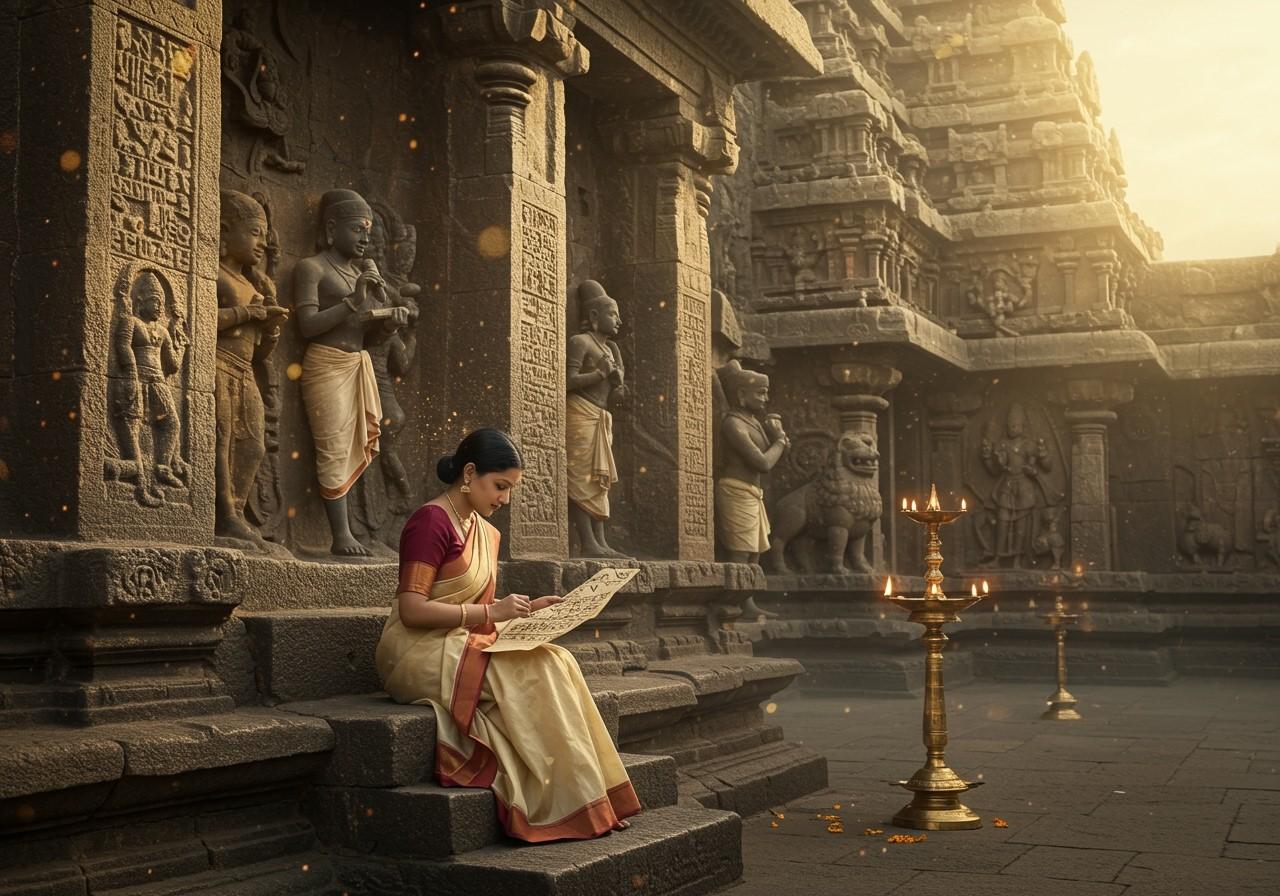
The Pallava script, also known as Pallava Grantha, and the languages associated with it hold a significant place in India’s cultural heritage. Emerging from the Tamil-Brahmi script during the Pallava dynasty’s reign (3rd-5th century AD) in Southern India, this script played a crucial role in shaping various Southeast Asian scripts, including Balinese, Baybayin, Javanese, and Kawi. Initially employed for Sanskrit and Prakrit, its descendant, the Grantha script, extended its reach to Tamil, Malayalam, and Manipravalam. This article delves into the Pallava script and language, exploring their historical context, key features, and notable inscriptions.
What is the Pallava Script?
The Pallava script, a Brahmi-derived writing system, served as a cornerstone of communication during the Pallava dynasty. Its ornate and angular characters distinguish it, and its influence on the development of scripts like Tamil, Telugu, Kannada, and Khmer is undeniable.
Origins and Evolution
- The Pallava script’s roots lie in the Tamil-Brahmi script, evolving during the 3rd-5th century AD.
- It diversified into regional scripts, including Tamil, Telugu, Kannada, and Khmer, leaving a lasting impact on written communication across Southern and Southeast Asia.
Distinctive Features
- Angular and ornate characters make the Pallava script visually striking.
- Unique stylistic elements set it apart from other Brahmi-derived scripts, reflecting the artistic sensibilities of the Pallava period.
Influence on Other Scripts
- The Pallava script’s impact extended to numerous South and Southeast Asian writing systems.
- Scripts like Balinese, Baybayin, Javanese, and Kawi bear the mark of Pallava influence, demonstrating its far-reaching legacy.
Pallava Language
Sanskrit primarily constituted the Pallava language, although Tamil also appeared in administrative and religious inscriptions. The Pallavas’ patronage of arts and culture fostered the growth of both languages.
Linguistic Characteristics
- Sanskrit served as the language of scholarly works and religious texts.
- Tamil found its place in administrative records and local communication, reflecting the region’s linguistic diversity.
Pallava Inscriptions
Pallava inscriptions, etched onto temples, monuments, and other structures, offer invaluable historical insights into the dynasty’s political, social, and cultural landscape.
Types of Inscriptions
- Royal Edicts: These inscriptions documented royal decrees and administrative decisions.
- Religious Texts: Found on temple walls, these inscriptions preserved sacred writings and religious pronouncements.
Decoding Pallava Script and Language
Deciphering Pallava inscriptions requires a deep understanding of historical context and linguistic nuances. Scholars utilize various methodologies to decode these ancient texts.
Methodologies
- Comparative Analysis: Comparing the Pallava script with other ancient scripts illuminates its unique features and relationships.
- Linguistic Reconstruction: Analyzing language patterns helps scholars piece together lost meanings and understand the evolution of the language.
Preservation and Study of Pallava Script and Language
Preserving Pallava inscriptions is crucial for safeguarding cultural heritage. Institutions and scholars actively engage in research, conservation, and educational initiatives.
Importance of Preservation
- Protecting these inscriptions ensures that future generations can access and learn from the rich history of the Pallava dynasty.
- Preservation efforts maintain a tangible link to the past, enriching our understanding of India’s cultural heritage.
Connecting with Pallava Heritage through Poojn.in
Poojn.in, India’s leading cultural goods and services store, offers products that resonate with the rich Pallava heritage. Given the Pallava period’s reverence for the five elements and their representation in architectural wonders like the Pancha Rathas of Mahabalipuram, we recommend exploring our collection of Panch Ratna (Five Precious Stones).
Panch Ratna (Five Precious Stones): Available at poojn.in, these sacred gems symbolize the five elements, reflecting the architectural and spiritual significance of the Pallava period.
Explore related items for Pallava-style worship at poojn.in:
Visit poojn.in to discover a wide range of authentic ritual items and connect with the spiritual legacy of the Pallavas. We offer pan-India delivery.
Conclusion
The Pallava script and language offer a captivating glimpse into India’s rich past. These meticulously crafted inscriptions narrate stories of a bygone era, revealing the political, social, and spiritual fabric of the Pallava dynasty. Preserving and studying these historical treasures ensures that their legacy continues to inspire and inform future generations. Through the combined efforts of institutions, scholars, and the community, the spirit of the Pallavas remains alive, enriching our present and shaping our future.
Explore more about the fascinating world of ancient Indian temples:
- Lakshmi Narasimha Temples
- Srisailam Mallikarjuna Jyotirlinga
- Veerabhadra Temples of India
- Lepakshi Temple


